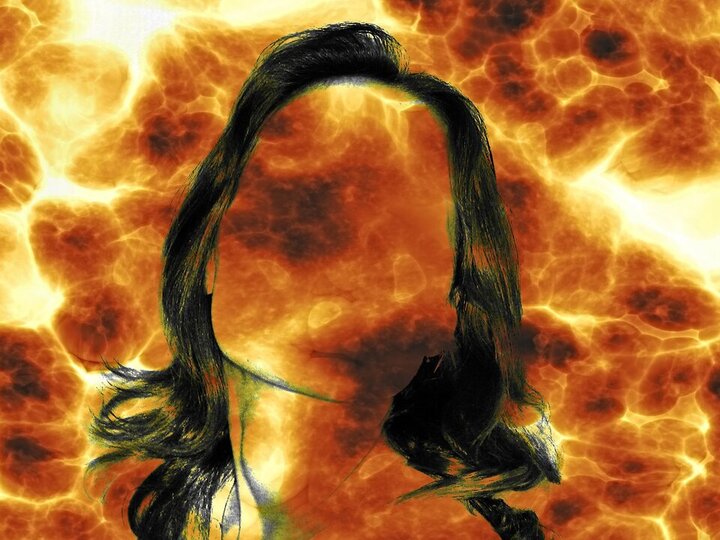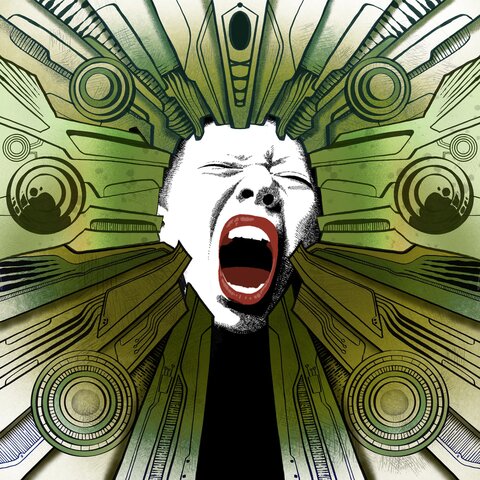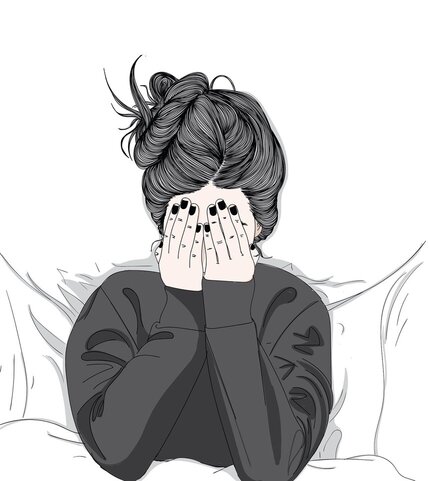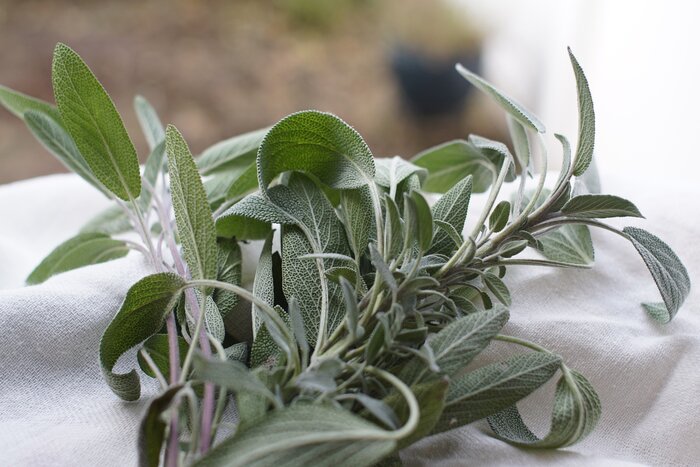Cerridwen’s Menopause Medicine Wheel – The Transformative Fire

Image by Gerd Altmann of Pixabay
The midlife woman feels the fire, the heat that burns her up from within and makes her sweat. During the day she feels the hot flushes, like fire rising from within as it colours her face and she casts off her outer layer of clothes, only to put them back on again soon after as she feels the cold. At night it feels worse as the fire rages and, feeling like she is going to spontaneously combust, she throws off her bed clothes then feels the cold as she wakes up uncovered. Sometimes, she wakes up drenched in sweat. Her sleep is affected and she feels tired and uncomfortable.
Cerridwen of Fire
The Menopause is a major rite of passage that a woman journeys through at midlife that takes her from her reproductive years to her wise-woman elder years. Cerridwen, as Goddess of transformation and change, watches over her and guides her path. As Initiatrix, she helps her to let go of who she was before and as Wise medicine-woman and teacher helps to guide her through this sacred transformative journey. In her aspect of Cerridwen of Fire she understands the transformative menopausal fire; the sacred fire that the woman feels, burning away that which doesn’t serve her and as the woman’s fire energy rises, she is being reforged and remade as wise-woman herself. Cerridwen understands the sacred rage and warrior fire too, that many women feel as the bullshit filters come up and she sees a reality that makes her angry and wants to change that in the world which does not serve humanity and the earth.
The midlife woman finds it hard to see all this as she feels exhausted, embarrassed and at her wit’s end. The hot flushes are a struggle and often disruptive. She finds it difficult to regulate her body temperature and it reminds her of how her body is changing and that she is getting older. Everything about her body and emotions are feeling different and sometimes difficult. The rising anger and irritability often make her difficult to be with, affecting family life and relationships.
Sacred Rage

Image by user1512561070 from Pixabay
As a Medical Herbalist, I see many women on the menopausal transition. Hot flushes and night sweats are a common problem for women. The start of my own menopausal journey commenced with hourly hot flushes during the day and night. It was so bad at night I thought I was going to spontaneously combust and it affected my sleep. I had just been through a very challenging and stressful time at home and knew that this was connected somehow. The herbs, as well as diet and supplements, were very effective and helped me to realise the potency of natural medicine as a way of supporting the body to go through this transition, which I believe was never intended to be so challenging. My own sacred anger led me to the anti-fracking protests and I felt shocked and embarrassed at my own rage and how I, a calm healer and herbalist, yelled at the police, the Tories and the frackers. One of my close mates, Paula, feels constantly angry at what’s happening in the world and finds she cannot contain herself sometimes. We laugh at our sacred woman rage and how it fires us up to speak our truth, challenges injustice and we ride on it to get things done.
Hot flushes and Night Sweats
Most women experience hot flushes and night sweats when going through the menopausal transition. They are the most common symptoms of the menopause and can affect three out of every four menopausal women. Hot flushes are characterised by sudden feelings of heat which seem to come from nowhere and spread upwards through the body, and are mainly felt on the chest, neck and face.
Falling levels of oestrogen and progesterone affect the area of the brain known as the hypothalamus that regulates body temperature. Normally, our bodies are able to adjust to changes in temperature throughout the day such as having hot food or drinks, feeling stressed or going from a warm room to a cold one and vice versa and we never really notice. During the menopause, our bodies take a little while to adjust to changing fluctuations in body temperature and so we feel a hot flush or night sweat. Some women get palpitations and feelings of anxiety with them, as well as sweating. The amount of hot flushes a woman experiences and the duration of them can vary during the day and they can be increased with stress, alcohol and food.

Image by Payapong Saydaung of Pixabay
Hot flushes can start a few months or years before menstruation finally ceases and can usually continue for several years afterwards. Very occasionally, women in their sixties and seventies can have them too. Hot flushes can also be a sign of other health problems so if they carry on beyond the menopausal transition it’s best to get medical advice.
Night sweats are periods of heavy sweating, or hyperhidrosis, associated with hot flushes that occur at night. They can often wake women up from sleep. Quite often women wake up drenched and need to get up and change bed clothes and bedding.
Helpful advice
You can try these tips to ease your symptoms:
-Cut out or reduce coffee and tea
-Stop smoking
-Reduce processed, “white” and sugary foods
-Keep the room cool and use a fan (electric or handheld) if necessary
-If you feel a flush coming on, spray your face with cool water or use a cold gel pack (available from pharmacies)
-Wear loose layers of light cotton or silk clothes so you can easily take some clothes off if you overheat
-Use layers of sheets on the bed, rather than a duvet, so you can remove them as you need to
-Cut down on alcohol
-Sip cold or iced drinks
-Have a lukewarm shower or bath instead of a hot one
-Look at ways of reducing stress or helping you to cope with stress.
Herbal Allies
There are many herbal allies used to support women struggling with hot flushes and night sweats. Medical Herbalists often work with women as individuals and support them holistically using a combination of herbs as well as diet. Here is a commonly used herbal ally that often forms part of prescriptions.
Sage – Salvia officinalis
Common sage can be found in good markets and grocers’ shops as well as being grown in the garden.
It is an excellent herb that is useful for all remedies of the ear, nose, throat and mouth, being used as an antiseptic gargle to help heal and strengthen gums and teeth, treat mouth ulcers and sore throats, pharyngitis, laryngitis and tonsillitis. It’s a drying herb and good for drying up catarrh and sinusitis.
It can be used for the lungs, as well as being a digestive tonic.

Image by cferringo426 from Pixabay
Women’s health and Menopausal uses:
Sage influences the Pituitary and Adrenal glands. This herb is a great hormone balancer and can be used from puberty to menopause. It contains phyto-oestrogens and can help regulate the menstrual cycle, reducing heavy periods and slowing down menstrual loss.
During the menopause, Sage is extremely helpful for drying up night sweats and reducing hot flushes as well as helping support the changeover from fertility levels of oestrogen from the ovaries to maintenance levels of oestrogen from the adrenal glands, which happens during the menopause.
A small study group of 71 women in Switzerland going through the menopause for over 12 months and having at least five hot flushes daily were given one tablet of fresh sage leaves for 8 weeks. The results showed that there was a significant decrease in hot flushes within 4 weeks of taking sage. Other menopausal symptoms also decreased too.
Cautions: Sage shouldn’t be used during pregnancy. Used during breastfeeding it can dry up milk.
Sage Tea
When taken hot, Sage tea can bring out the aromatic oils and promote perspiration but when drunk cold or lukewarm the aromatic oils are not brought out so much and it can help the skin retain fluids by reducing perspiration and sweating. This makes it ideal to use for menopausal night sweats and hot flushes.
To make Sage tea: Use four to five leaves of fresh Sage, or a rounded teaspoon of dried sage, per cup of boiling water. Make in a pot and cover to prevent the oils from escaping. Infuse for one minute then strain and drink if using hot. If using for hot sweats, leave to cool with leaves in, strain and drink. It can be used cool at bedtime for night sweats. Sage tea can be drunk three times a day.
Sage Tincture (Folk method)
I love to make fresh sage tincture with women as it’s so empowering to do and much cheaper to make than buying a tincture from a health food shop.
- Take about three bunches of fresh Sage, chop finely and pack into a litre jar.
- Add a 75cl bottle of vodka to which you have diluted with spring water, or sage tea to make up to a litre.
- Pour over the Sage and make sure the alcohol covers the herb.
- Place in a dark cool place and leave for a month, shaking every few days and ensuring the leaves are covered.
- After a month, strain through muslin and squeeze or put through a press to ensure all the tincture is extracted
- Bottle and label.

Image by Alexa of Pixabay
Dosage:
1-2 mls (20-40 drops) three times a day as tincture.
Edwina Hodkinson BSc(Hons) MNIMH
Medical Herbalist and second spiral Priestess of Cerridwen
Member of the National Institute of Medical Herbalists
Bury, Lancashire, UK

I have been a medical herbalist for 12 years, having graduated with a first-class degree in Herbal Medicine at Central Lancashire University. I work as a consulting medical herbalist in private practice in Bolton or via zoom, specialising in women’s health as well as working with community groups to help reconnect them to nature and the medicines growing around us. I also facilitate Wise Woman Rising workshops which help women to reconnect to the wise knowledge of menopause. I have a deep love for our native wild medicines and like to work with them as much as possible, which includes teaching local people about local herbs in a way that helps them reconnect to the world around them in a deeper way.
I have a background in nursing as well as having been a complementary therapist for over 25 years specialising in cancer care and working with the very sick. I am a forager, Clinical Reflexologist for 26 years, aromatherapist, Shamanic practitioner and Breath work coach.
websites: edwinahodkinsonherbalist.co.uk and weedsandwildmedicine.co.uk
Medical Disclaimer
The Herbal Allies are shown here as part of a larger pharmacopoeia of herbs typically used by herbalists to support women during the menopausal transition and beyond and will be explored more in further articles. They are not prescriptive in any way, nor is it suggested you use them for particular issues and menopausal symptoms. Before using any herbs it’s best to consult with a Medical Herbalist or suitably qualified practitioner as not all herbs are suitable for all women and may interact with medications.